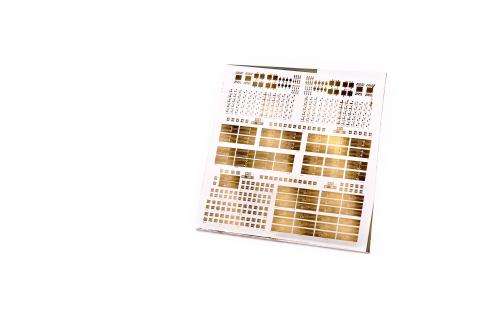World-first UHF IGZO Schottky diode presented: Breakthrough achievement towards low-cost passive thin-film RFID tags

At this week's IEEE International Electron Devices Meeting (IEDM 2012), imec presented the world-first ultra-high frequency Schottky diode based on amorphous IGZO (Indium-Gallium-Zinc Oxide) as semiconductor. This breakthrough achievement will enable the development of thin-film passive UHF (ultra-high frequency) RFID (radiofrequency ID) tags to replace item-level bar codes.
Passive intelligent item-level RFID tags are ideal for the retail sector and enable more accurate tracking of individual products (i.e. expiration, misplacement, theft, etc). Unlike bar codes which require one-per-one scanning by the reader, UHF RFID-tags could be scanned all together. However, today's UHF silicon-based RFID technology is too expensive for mass-market retail applications. Imec's research aims to dramatically reduce the cost of the entire RFID by combining ultra high frequency (UHF) operation with a thin-film-based technology. UHF RFID tags have a long reading range (5 to 10 meters) and employ small, printed, low-cost antennas. Compared to Silicon, IGZO based technology has the potential to result in a low-cost solution, since IGZO thin film active devices are fabricated using a cheaper, low-temperature process. This allows the development of chips direct on a plastic foils, such as on the product package. However, IGZO has intrinsically a lower performance than conventional Silicon and other conventional crystalline semiconductors. Therefore, it is a challenge to fabricate ultra-fast active devices based on IGZO.
The diode is the fundamental block in the power supply generator of passive, i.e., battery-less tags. It rectifies the carrier wave captured by the antenna and feeds the power supply on the tag. IGZO is an amorphous semiconductor with gap states that impede the formation of a stable Schottky barrier, irrespective of the metal used. To achieve a stable Schottky barrier, imec developed specific plasma and anneal treatments that alter the chemistry of the Schottky interface. The resulting IGZO Schottky diodes have a rectification ratio of up to nine orders of magnitude (at +1V and -1V), current densities of up to 800A/cm2 at forward bias of 1V, and a cut-off frequency of 1.8 GHz. When incorporated in a single stage rectifier, the cut-off frequency is 1.1GHz. The rectifiers are demonstrated to operate at ultra-high frequency (868MHz) with low losses.
This achievement, together with imec's recent demonstration of a functioning bidirectional thin-film RFID circuit (at ISSCC2012), are critical research development steps towards the realization of intelligent item-level tagging with broad implementation opportunities in the retail sector.
Provided by IMEC
















